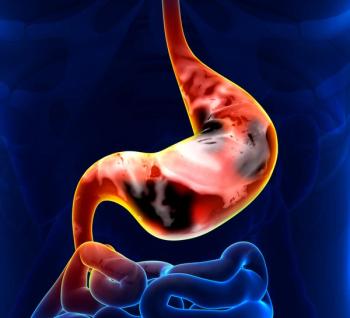
Once Weekly SVd Improves PFS in Patients with Pretreated Multiple Myeloma with High Cytogenetic Risk
The phase 3 BOSTON study demonstrated superior PFS and ORR with selinexor (Xpovio), bortezomib (Velcade), and dexamethasone in patients with relapsed/refractory multiple myeloma.
Once weekly selinexor (Xpovio), bortezomib (Velcade), and dexamethasone (SVd) was superior to bortezomib and dexamethasone (Vd) alone in patients with relapsed/refractory multiple myeloma who had received 1 to 3 prior therapies, according to a subgroup analysis from the phase 3 BOSTON study.
The research, presented at the 62nd American Society of Hematology (ASH) Annual Meeting and Exposition, showed that for patients with high cytogenetic risk, treatment with SVd led to an increase in overall response rate (ORR) and progression-free survival (PFS) despite a dosing schedule that utilized 40% less bortezomib and 25% less dexamethasone during the first 24 weeks of treatment.
“SVd is superior to Vd in patients with multiple myeloma, including high-risk disease, as supported by the progression-free survival in the different subgroups of patients with high-risk cytogenetics,” Shambavi Richard, MD, Icahn School of Medicine at Mount Sinai, said during a presentation. “Once weekly SVd is a highly active regimen, and may be an important treatment option for patients with high-risk multiple myeloma,” Richard added.
Of the 402 patients enrolled in the BOSTON study, 192 (48%) had high-risk (SVd, n = 97; Vd, n = 95) and 210 (52%) had standard-risk (SVd, n = 98; Vdn = 112) cytogenetics. The SVd regimen demonstrated improved PFS relative to Vd in the high-risk (12.9 vs 8.1 months; HR, 0.67; 95% CI, 0.45-0.98; P = .0192) and standard-risk (16.6 vs 9.7 months; HR, 0.63; 95% CI, 0.42-0.95; P = .0131) groups. Moreover, ORR was significantly improved in the high-risk group (77.3% vs. 55.8%, respectively; P = .0008).
For this post-hoc analyses, patients were deemed to be of high cytogenetic risk if they were found have at least of the following abnormalities in at least 10% of screened plasma cells:
- del(17p)
- t(4;14)
- t(14;16)
- amplification of 1q21
The SVd regimen improved PFS in all high-risk subgroups except t(14;16), which was the smallest subgroup. Patients with a 17p deletion saw the greatest benefit, with a PFS of 12.22 months for those receiving the SVd regimen, vs 5.91 months for those treated with Vd. Patients with a 17p deletion also saw the greatest benefit in terms of ORR (76.2% vs 37.5%; P = .0096).
The safety profiles of SVd and Vd in the high-risk and standard-risk groups were consistent with the overall study population. Of note, the rate of grade 2 or lower peripheral neuropathy was lower with SVd compared with Vd in both the high-risk (25.7% vs 35.7%, respectively; P = .100) and standard-risk groups (18.4% vs. 33.6%, respectively; P = .003).
“Despite recent advances in myeloma, high-risk anomalies such as deletion 17p, translocation 4;14 and translocation 4;16 are still associated with shorter progression-free survival and overall survival relative to those with standard-risk cytogenetic features,” noted Richard, adding “There’s an unmet need for novel therapies to improve outcomes of high-risk cytogenetics in myeloma patients. Selinexor’s novel mechanism [of] reactivating tumor suppressor proteins and reducing levels of oncoproteins may be particularly suited for high-risk disease.”
Reference
Richard, S. Once Weekly Selinexor, Bortezomib, and Dexamethasone (SVd) Versus Twice Weekly Bortezomib and Dexamethasone (Vd) in Relapsed or Refractory Multiple Myeloma: High Risk Cytogenetic Planned Subgroup Analyses from the Phase 3 BOSTON Study. Presented at: 62nd American Society for Hematology (ASH) Annual Meeting and Exposition; December 5-8, 2020. Abstract 1385.
Newsletter
Stay up to date on recent advances in the multidisciplinary approach to cancer.


















































































